New Pulses & Encoding Schemes
New Pulses & Encoding Schemes
Oral
Oral
Acquisition, Reconstruction & Analysis
Wednesday, 15 May 2019
| Room 710A | 08:15 - 10:15 | Moderators: William Grissom, Maxim Zaitsev |
| 08:15 |
0756. 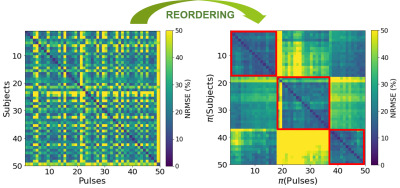 |
SmartPulse, a Machine Learning Approach for Calibration-Free Dynamic RF Shimming in Body Imaging
Raphaël Tomi-Tricot, Vincent Gras, Bertrand Thirion, Franck Mauconduit, Nicolas Boulant, Hamza Cherkaoui, Pierre Zerbib, Alexandre Vignaud, Alain Luciani, Alexis Amadon
At high field, tailored static or, better, dynamic RF shimming can be used to reduce artifacts due to transmit B1 field inhomogeneity, but those methods require extra time for calibration, which can disrupt clinical workflows. Recently, universal pulses (UP) were introduced in brain imaging to get rid of calibration. In this work, a machine learning method is proposed to extend universal pulse kT-point design to body imaging where inter-subject variability is more pronounced, by classifying subjects into one of several predefined categories. This method outperforms UP design, and yields images similar to those obtained with state-of-the-art tailored design.
|
08:27 |
0757. 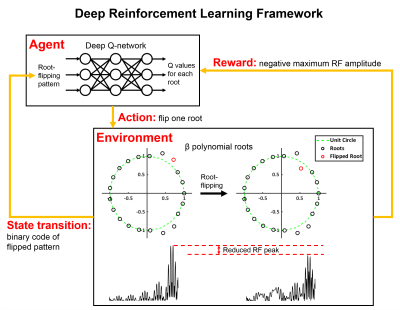 |
Deep reinforcement learning designed RF pulse
Dongmyung Shin, Sooyeon Ji, Doohee Lee, Se-Hong Oh, Jongho Lee
In this study, we developed an approach
|
| 08:39 |
0758. 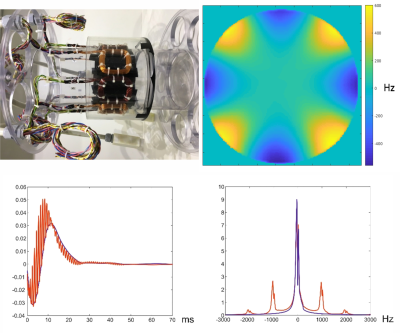 |
Spread-spectrum MRI: acceleration of image acquisition using locally modulated magnetic fields
Klaus Scheffler, Jonas Bause, Ali Aghaeifar, Theodor Steffen, Bernhard Schölkopf, Alexander Loktyushin
We introduce the principles of a novel approach for the acceleration of signal acquisition that is based on a rapid and unique modulation of localized magnetic fields superimposed to the conventional linear gradient-based spatial encoding.
|
| 08:51 |
0759. 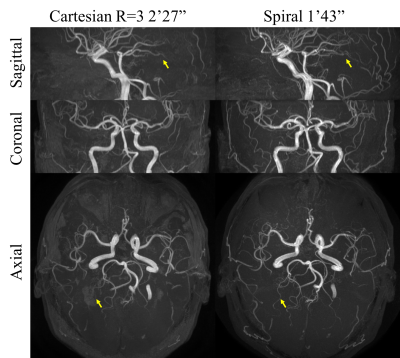 |
Spiral Time of Flight with Sliding Slice Localized Quadratic Encoding
Dinghui Wang, Melvyn Ooi, Nicholas Zwart, Zhiqiang Li, James Pipe
In this work, a fast and flexible TOF technique is proposed by applying sliding-slice spiral acquisition with localized quadratic encoding RF pulse. Due to the fast acquisition, water-fat separation and deblurring can also be applied using data from two TEs to improve the visualization over the conventional out of phase method. Volunteer scans in head and neck have demonstrated that the proposed method is 0.4 - 2 times faster than the conventional 2D Cartesian TOF and 3D Cartesian multi-slab TOF, yet provides slightly better visibility of the flow.
|
| 09:03 |
0760. 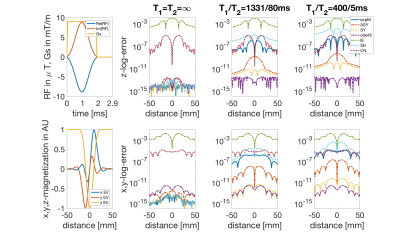 |
Simulation of Bloch and Bloch-McConnell equations - speed and accuracy
Christina Graf, Armin Rund, Christoph Aigner, Karl Kunisch, Rudolf Stollberger
Accurate Bloch and Bloch-McConnell model simulation is essential for proper modelling and becomes crucial for iterative RF pulse design methods. This work demonstrates the advantages of a piecewise analytical solution using eigenvalues and eigenvectors and an asymmetric and symmetric operator splitting scheme. Those three solvers are compared to five other numerical solution methods regarding accuracy and runtime. The symmetric operator splitting prevails in both compared to the others. Moreover, it is quadratic convergent with respect to the time step and therefore seems to be a good choice for optimal control approaches for Bloch and for Bloch-McConnell models.
|
09:15 |
0761. 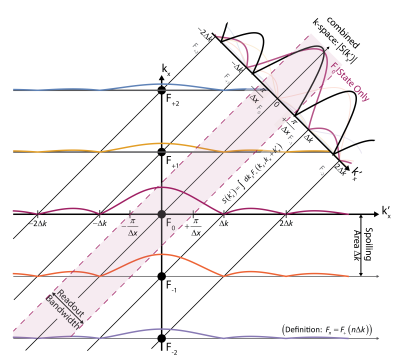 |
Unifying Extended Phase Graphs and k-space Readout
Christian Guenthner, Sebastian Kozerke
Conventional Extended Phase Graphs (EPGs) allow for an efficient analysis of signal behavior in MRI sequences involving spoiling gradients. The concept has been adapted to spatially resolved EPGs, where spoiling and spatial information is assumed to be fully uncoupled. In this work, we formulate an approach for the combination of configuration state theory and the conventional k-space concept, by re-coupling spoiling and spatial information. The concept not only permits investigating the interference of spoiled signals leading to additional ringing artifacts, but also allows to study arbitrary readout trajectories in the realm of EPGs.
|
09:27 |
0762. 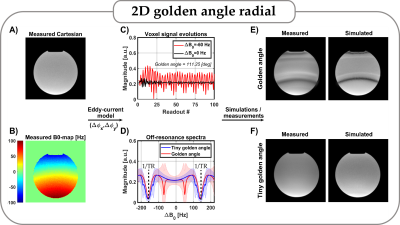 |
Prospective GIRF-based RF phase cycling to prevent eddy current-induced steady-state disruption in balanced SSFP imaging
Tom Bruijnen, Bjorn Stemkens, Jan Lagendijk, Cornelis van den Berg, Rob Tijssen
Balanced steady-state free precession sequences offer the highest signal-to-noise ratio and encode multiple physical parameters into the signal. However, the sequence is prone to eddy current-induced steady-state disruptions that can severely compromise the image quality or the physical parameter quantification. In this work we describe how the eddy currents act on the signal evolution and propose a novel prospective solution that in principle is applicable to any MRI examination.
|
09:39 |
0763. 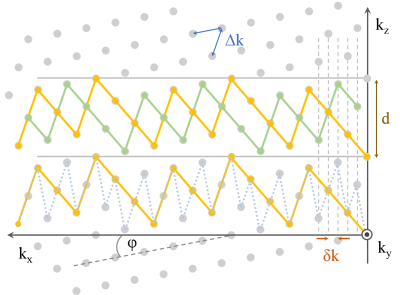 |
T-Hex: Spiral sampling on a tilted hexagonal grid
Maria Engel, Lars Kasper, Bertram Wilm, Benjamin Dietrich, Laetitia Vionnet, Klaas Pruessmann
In this work, we show a stack of spirals on a tilted hexagonal grid. This trajectory is used for fast 3D acquisitions with long readouts and combines the optimal hexagonal 3D sampling with the high acquisition efficiency of spirals. Isotropic 2.8 mm whole-brain coverage is achieved in 200 ms relying on cg-SENSE reconstruction, without the need for non-linear regularization.
|
| 09:51 |
0764  |
Time-Resolved MRI of the Human Brain with 3.5 ms per Frame Video Permission Withheld
Bertram Wilm, Franciszek Hennel, Manuela Roesler, Markus Weiger, Klaas Pruessmann
MR imaging with shortest possible acquisition times is targeted by single-shot spiral readouts and extremely rapid gradient encoding. The implementation involves a first demonstration of spiral imaging using a gradient insert to achieve a slew rate of 1200 T/m/s. The achievable imaging performance is evaluated and in-vivo results are presented. The setup permitted imaging with more than 280 frames per second, which also allowed the extraction of rudimentary spectral imaging information from a single MR readout. The newly available temporal resolution in MR may be utilized to gain new insights in brain function and physiology.
|
| 10:03 |
0765. 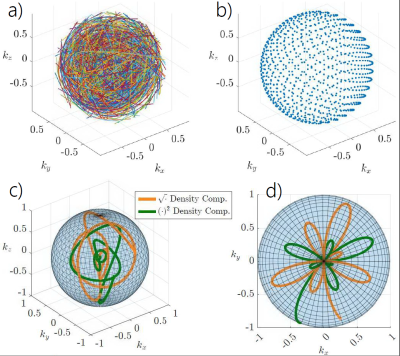 |
Efficient 3D low-discrepancy -space
sampling using highly adaptable Seiffert Spirals
Tobias Speidel, Patrick Metze, Volker Rasche
The overall duration of acquiring a Nyquist sampled 3D dataset can be significantly shortened by enhancing the efficiency of -space
sampling. This can be achieved by increasing the coverage of -space
for every trajectory interleave. Further acceleration is possible by making use of advantageous undersampling properties.
This work presents a versatile 3D centre-out -space trajectory, based on Jacobian elliptic functions (Seiffert's spiral). The trajectory leads to a low-discrepancy coverage of -space, using a considerably reduced number of read-outs compared to other approaches. Such a coverage is achieved for any number of interleaves and therefore even single-shot trajectories can be constructed. Simulations and in-vivo studies compare Seiffert's spiral to the established 3D Cones approach. |
 Back to Program-at-a-Glance |
Back to Program-at-a-Glance |  Back to Top
Back to Top